| |
|
|
|
|
|
|
|
|
|
|
| |
| |
 |
|
| |
田润德 编译文/图 2020-09-17
20:36 |
|
| |
|
|
|
|
| |
 |
|
|
|
| |
弗朗切斯科.杰米尼亚尼(Francesco Geminiani,1687—1762) |
|
|
|
| |
|
|
|
|
| |
吉米尼亚尼:D大调大协奏曲 (H.73/Op.3, No.1) |
|
|
|
| |
Ole Bull - Violin
Concerto in A major ('Grand Concerto'), Op. 4 (1834)
Ole Bull :1810-1880,挪威享誉世界的小提琴大师
A大调小提琴协奏曲(“大协奏曲”),作品4 (1834;1864年修订)
一、maestoso行板-快板maestoso [0:00]
2柔情慢板:柔情慢板[12:39]
3田园Rondo pastorale: Moderato
由挪威著名作曲家和小提琴演奏家Ole Bornemann Bull(1810-1880)创作的第一小提琴协奏曲。
小提琴手:安娜·福尔斯?
指挥:奥勒·克里斯蒂安·路德
挪威广播交响乐团 |
|
|
|
| |
Violin Concerto in A major
("Grand Concerto"), Op. 4 (1834; revised 1864)
I. Andante maestoso - Allegro maestoso [0:00]
II. Adagio sentimentale: Adagio sostenuto [12:39]
III. Rondo pastorale: Moderato [15:38]
The first violin concerto by the famous Norwegian composer and virtuoso
violinist Ole Bornemann Bull (1810-1880).
Violinist: Annar Folles?
Conductor: Ole Kristian Ruud
Norwegian Radio Orchestra |
|
|
|
| |
|
|
|
|
| |
音乐历史上的今天
1762年9月17日,74岁的小提琴家、作曲家弗朗切斯科.杰米尼亚尼(Francesco
Geminiani,1687—1762)发现他的女仆偷走了他尚未出版的唯一一份讲述小提琴演奏的手稿后,在都柏林一蹶不起。
弗朗切斯科·萨韦里奥·杰米尼亚尼(Francesco Saverio
Geminiani,c.1680~1762)于1679或1680年生于卢卡。他的父亲朱利亚诺·杰米尼亚尼(Giuliano
Geminiani)是一位在宫庭乐队(Cappella
Palatina)工作的小提琴家而且是他的启蒙老师。后来他在米兰跟卡洛·安布罗焦·洛纳蒂(Carlo Ambrogio
Lonati)学习,最后他去了罗马向科雷利学习小提琴演奏,在所有老师中科雷利对他的影响是最强烈的,这种影响在日后杰米尼亚尼自己的作品中清晰可见。杰米尼亚尼也去过那不勒斯,因为我们知道他曾在那里向亚历山德罗·斯卡拉蒂(Alessandro
Scarlatti)学习作曲。
1706年杰米尼亚尼回到了他的故乡并开始了他作为小提琴家,作曲家和教师的艺术生涯。他接过了他父亲在西尼奥里阿剧院乐队(Signoria
theatre
or-chestra)和宫庭乐队担任的工作,然后在1711年被任命为那不勒斯歌剧院乐队的首席小提琴。据伯尼(Burney)说杰米尼亚尼在乐队里速度过于自由,大多数乐队的小提琴演奏员都觉得很难和他一起演奏,这样最后他只得去拉中提琴。如果这故事是真实的,那最可能的并非是杰米尼亚尼不能控制自己的速度。正相反,那不勒斯乐队演奏员所熟悉的是较老式的大协奏曲的风格,他们还没有体验过在独奏协奏曲里所能找到的风格的变化,在独奏协奏曲里独奏小提琴由低音声部伴奏,某种自由度不但允许而且甚至是要求的。1714年失望的杰米尼亚尼去了英国并开始了他在海外的成功的生涯。尽管他将自己的活动限制在一个比较小的社会名流的圈子里,他很快就成了英国最重要的小提琴家与作曲家之一。
他经常举行音乐会并从1716年起在英国出版自己的作品,这些作品受到通常不那么热情的英国听众的热烈欢迎。事实上英国成了他这一生中主要活动的地方,尽管他确实也为了他的作品的出版工作去过法国。杰米尼亚尼去过爱尔兰好几次,一生中最后三年在那里度过并于大约82岁时在那里去世。
在作曲方面杰米尼亚尼并不是一个早熟的天才而是较晚才开始他在这方面的工作。他的作品受科雷列影响很大,正如科雷列那样,杰米尼亚尼也把精力集中在小提琴音乐的写作上,特别是协奏曲和奏鸣乐,虽然他确实也为别的乐器写过一些作品,杰米尼亚尼不是维瓦尔第那种创作速度极快的作曲家,他一点也不急于增加自己作品的数量,宁可反复对这些作品进行润色加工并力求把它们写得更完美一些。虽然作品数量并不很多,这些作品所具有的质量与所显示的高雅审美趣味却足以证明杰米尼亚尼确实是巴罗克时期一位杰出而重要的作曲家。
杰米尼亚尼与同时代的维瓦尔第不相同的另外很重要的一点是他没有为小提琴谱写任何独奏协奏曲,他所创作的是科雷利所喜欢的那种大协奏曲。在杰米尼亚尼的时代这种体裁在意大利正在逐步不像过去那样流行,但在英国气氛要保守得多,科雷利在体裁运用上的传统受人欢迎得也要比别的地方更为长久,因而大协奏曲这种体裁还十分流行。杰米尼亚尼的大协奏曲通常由四个乐章组成,其速度安排是与科雷利相似的“慢-快-慢-快”。科雷利也用过让独奏与乐队交替演奏很短的段落的方法创造一种生动效果,这种风格事实上不但为科雷利而且也为贝尔纳多·帕斯奎尼(Bernardo
Pasquini,1637~1710)与格奥尔格·穆法特(Georg
Muffat,1653~1704)所采用。但与科雷利大协奏曲中的主奏部(Concertino)不同的是杰米尼亚尼加了一架中提琴,这样主奏部的音量就由一个内部的声部予以增大。
杰米尼亚尼的奏鸣乐更接近于教堂风格而不是室内风格,而在他的其它作品中舞曲乐章也很少用。在装饰方面杰米尼亚尼比科雷利走得还要更远些,因为他不仅在慢乐章而且在速度快的乐章里也使用了装饰。考虑到这些奏鸣乐写成的年代,杰米尼亚尼奏鸣乐的技巧要求是很高的;在有些段落里甚至要求第七把位,这种把位要求加上某些困难的双音、大音程的跳进、复杂的节奏以及各种复杂的音型使这些奏鸣乐非常具有挑战性,在当时并不是每个小提琴家都能演奏这些奏鸣乐的。杰米尼亚尼还留下了一部无伴奏奏鸣乐的手稿,因为在意大利并没有写这种体裁的传统,这部作品应该说是非常难得而罕见的。他的作品1奏鸣乐未加装饰与有装饰的两种记谱都流传了下来,对现代想了解后期巴罗克的演奏方式的小提琴家来说无疑是很有教益和帮助的。
杰米尼亚尼的著作要比他的大协奏曲和奏鸣乐等音乐作品来得更有影响,也可能这是他当了一辈子教师的合乎逻辑的结果;但是在最优秀的小提琴家—作曲家中这是个例外,因为在整个小提琴艺术史的发展过程中只有很少几个小提琴家写过能与他相比的教学方面的著作。在杰米尼亚尼为数很多的有关小提琴演奏,吉它演奏,审美趣味,和声,伴奏等的著作中最重要的无疑是1715年出版的那部《小提琴演奏艺术》(The
Art of Playing on the
Violin)。这本书可能应该说是系统地论述高级小提琴技巧的最早的论述,尽管这部著作所包含的详细内容要比现代小提琴家可能想要知道的来得少些,但它出自这么早的时代所具有的重要意义是随便怎样高地估计也不过份的。
在这部书里讨论了小提琴技巧的很多方面,很多看法都走在他那时代之前很远,例如半音音阶的指法即是如此,杰米尼亚尼主张用换指的方法演奏半音音程,这样他就指出了避免使人烦恼的半音滑指而能奏出“乾净的”半音阶的方法,不幸的是他提出来的这种先进的指法并没有引起人们足够的重视而被忽视,所以用换指的方法演奏半音阶的指法直到20世纪才得到广泛的应用(19世纪比利时小提琴家贝利奥曾对这种杰米尼亚尼提出的半音阶指法作了发展)。杰米尼亚尼对扩张与紧缩指法的使用也是应该提到的,而他所推荐的“尽可能多地”使用揉音在整个巴罗克时期也是独一无二的,似乎没有什么别的小提琴家曾留下过任何著作证明揉弦除了作为一种有时使用来进行装饰的手法之外还应连续使用的了,因此杰米尼亚尼的论述至少证明对待揉弦还是有各种不同的态度,他必定是一位很有独立见解和个性的小提琴家,有勇气坚持自己多年实践培育起来的与众不同的审美趣味。
虽然杰米尼亚尼在著作里阐述的看法在很多方面都领先于他的时代而且有很多方面是预言似的。杰米尼亚尼持弓的方法似乎还比较老式,因为右手还是放在离弓根很远的地方。不过在姿势上他也有好多方面比他同时代人领先得多;他的下巴放在拉弦板的左方,这样使他能更方便地演奏把位;他也指出了小提琴不应平持而是右方应低一些,这种位置对演奏G弦要来得更自然些;他关于肘关节与腕关节在演奏短音符时的作用,奏全弓时肩关节应参与动作,以及应尽量多用弓的意见无疑是正确而有教益的。
杰米尼亚尼并不是一位极多才多艺的艺术家,也不是一个殷切地希望向他那人数并不很多的听众显示他的熟练技巧的人。但他是一位在巴罗克全盛时期体现了意大利小提琴学派由科雷利到塔尔蒂尼的发展的杰出的小提琴家和作曲家。在一方面他继承了科雷利的传统,另一方面他又以自己的作品为这辉煌的传统作出了自己的贡献。他的作品在音响上更为饱满,想法与对比上更为丰富,而且在技巧方面要求也更高。对我们说来记录在杰米尼亚尼著作里的他的看法特别有价值,因为这些看法能帮助我们知道二百多年前所曾发生过的事,因而会帮助我们更好地了解和掌握那时期的音乐的风格。
今日视频音频:1、 杰米尼亚尼《D大调大协奏曲》 (H.73/Op.3, No.1);2、杰米尼亚尼
《大提琴通奏低音奏鸣曲》;3、杰米尼亚尼最著名的作品三套大协奏曲。 |
|
|
|
| |
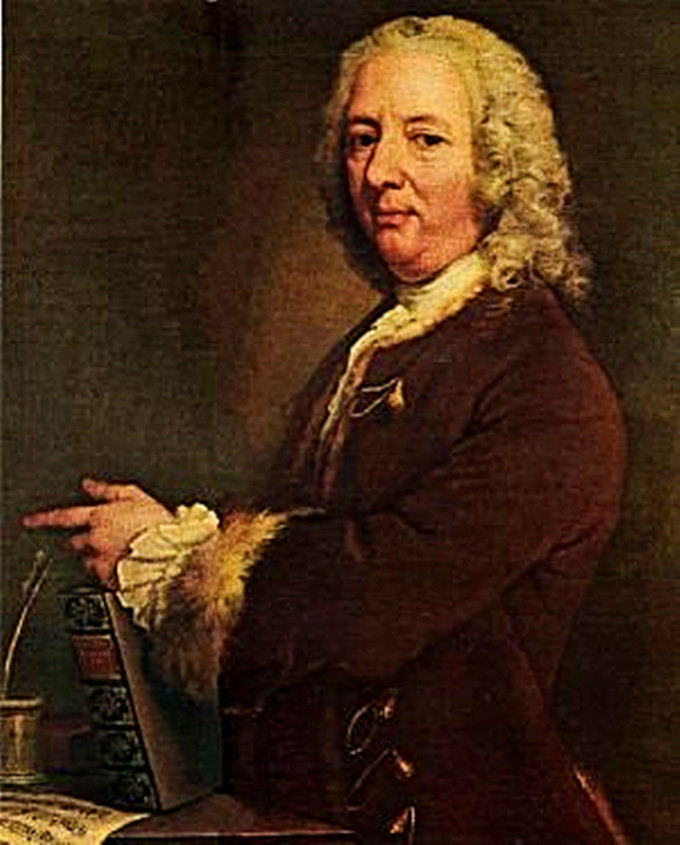 |
|
|
|
| |
弗朗切斯科.杰米尼亚尼(Francesco
Geminiani)
|
|
|
|
| |
弗朗切斯科.杰米尼亚尼(Francesco
Geminiani,1687– 1762),意大利小提琴家、作曲家、音乐理论家。
他曾经拜过的老师可能有A. Scarlatti(1660 – 1725,D. Scarlatti的父亲,参见av58532093),C. A.
Lonati(c. 1645 – c. 1712)以及科雷利(Arcangelo Corelli,1653 –
1713,参见av57451871)。1711年领导那不勒斯歌剧乐团,与A.斯卡拉蒂继续交流合作。1714年前往伦敦,以高超的小提技术闻名,曾与亨德尔(1685–1759)一起为乔治一世演奏。后来加入了共济会。
Geminiani 一生以教学和作曲为业,培养了很多学生,也曾因为炫技的演奏而被学生们戏称为“疯子”。其代表作品是几套大协奏曲,包括Op.2
(1732),这里的Op.3 (1733) 和 Op.7
(1746),在其中一些作品里探索了中提琴的功能。音乐理论方面主要有小提琴演奏著作Art of Playing on the Violin
(1751)以及和声学著作Guida harmonica
(c.1752)。此外还有一些小提琴独奏曲、重奏曲、协奏曲,以及有关键盘伴奏/演奏,和吉他/西特琴演奏的书本。
后世对于吉米尼亚尼的评价主要有两种声音,一种观点认为他的作品缺乏章法,另一种则认为他的大胆创新值得推崇。 |
|
|
|
| |
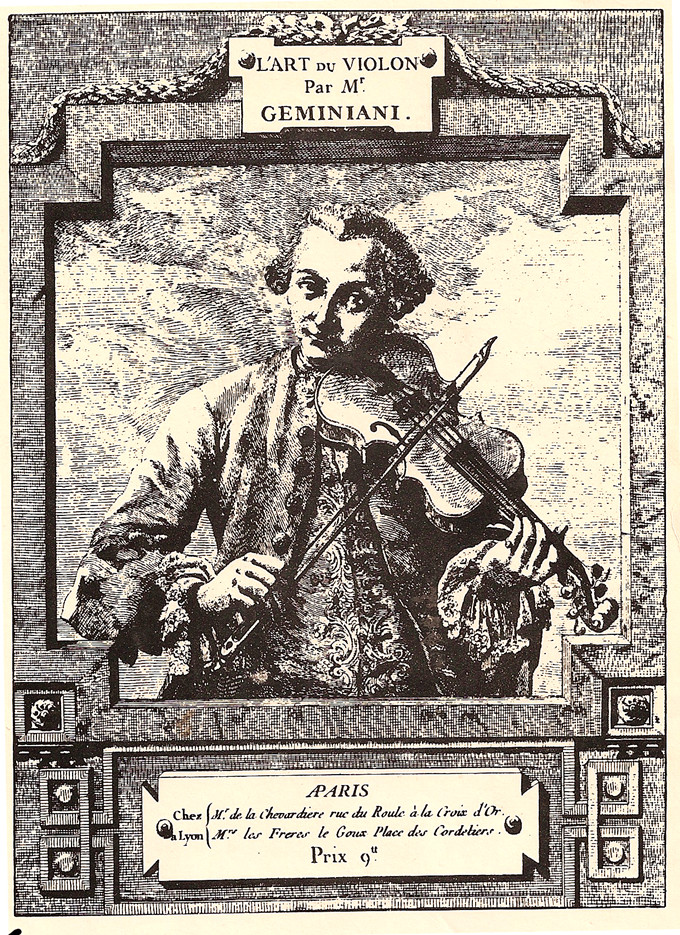 |
|
|
|
| |
弗朗切斯科.杰米尼亚尼(Francesco
Geminiani)的著名的著作《小提琴的艺术》一书的封面 |
|
|
|
| |
Francesco
Geminiani (1687 -- 1762) was an Italian violinist, composer and
musicologist.
The teachers he may have had were A. Scarlatti (1660 -- 1725, D.
Scarlatti's father, av58532093), C. A. Lonati (C.1645 -- C.1712) and
Arcangelo Corelli (1653 -- 1713, av57451871).He led the Naples Opera
Orchestra in 1711, and continued to communicate and cooperate with A.
Scarlatti.He went to London in 1714, and was famous for his excellent
skill in drawing small notes. He played for George I with Handel
(1685-1759).Later he joined the Freemasons.
A lifelong teacher and composer, Geminiani nurtured many students and
was nicknamed "crazy" by them for her showy performances.Its
representative works are several large concertos, including Op.2 (1732),
op. 3 (1733) here, and Op.7 (1746), some of which explore the functions
of the viola.In music theory, there are mainly works about Violin
Playing on the Violin (1751) and acoustic works Guida Harmonica (C.
1752).There are also violin solos, quartets, concertos, and books on
keyboard accompaniments/playing, and guitar/sith playing.
There are two main opinions on Geminiani: one is that his work lacks
structure; the other is that his bold innovation deserves praise. |
|
|
|
| |
 |
|
|
|
| |
弗朗切斯科.杰米尼亚尼(Francesco
Geminiani)的著名的著作《小提琴的艺术》中的练习曲 |
|
|
|
| |
 |
|
|
|
| |
弗朗切斯科.杰米尼亚尼(Francesco
Geminiani)的著名的著作《小提琴的艺术》中的曲目 |
|
|
|
| |
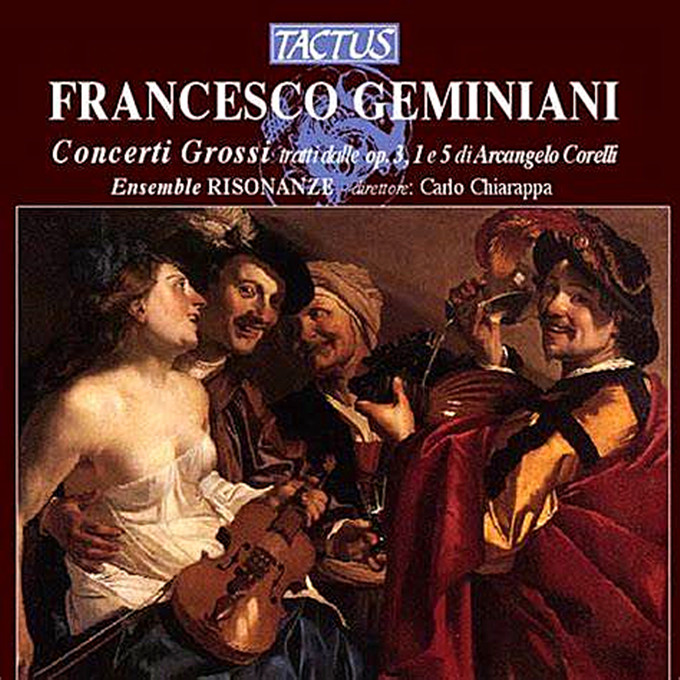 |
|
| |
杰米尼亚尼(Francesco
Geminiani)的产品方面 |
|
|
|
| |
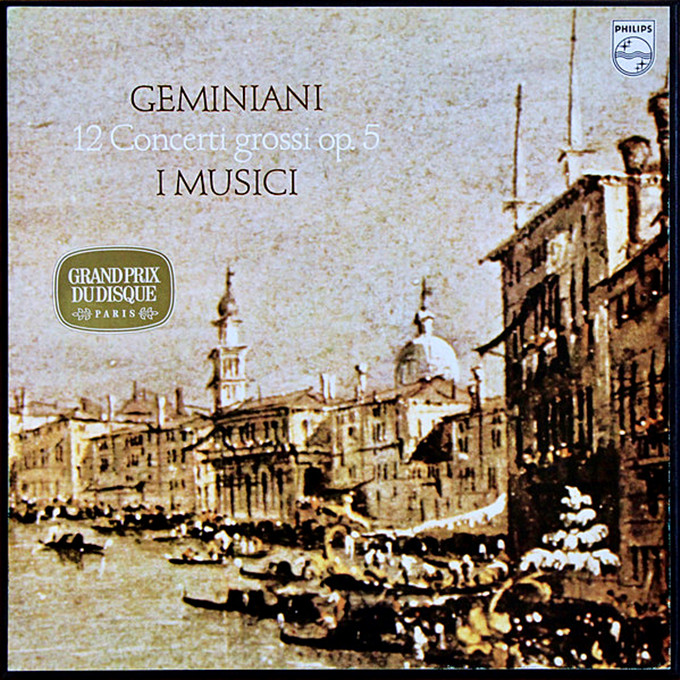 |
|
| |
杰米尼亚尼(Francesco
Geminiani)的唱片封面 |
|
|
|
| |
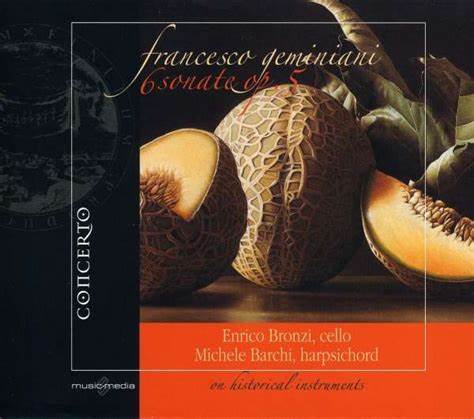 |
|
|
|
| |
弗朗切斯科.杰米尼亚尼(Francesco
Geminiani)的唱片封面 |
|
|
|
| |
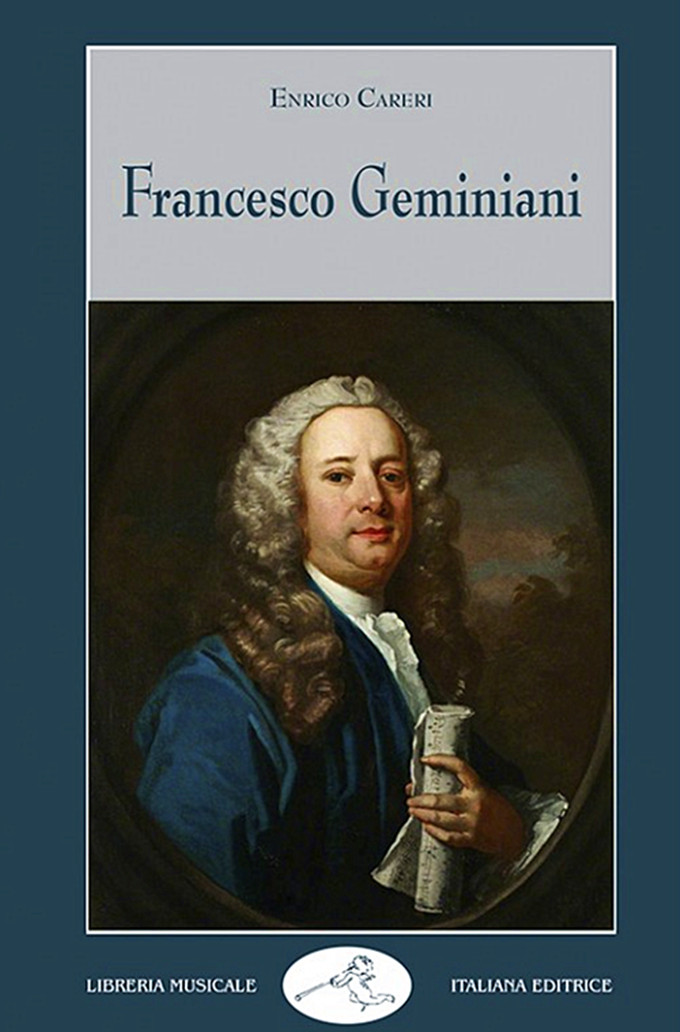 |
|
|
|
| |
这是音乐家恩里科·卡里耶里关于研究弗朗切斯科.杰米尼亚尼(Francesco
Geminiani)的著作,说明杰米尼亚尼或者说巴洛克时期的音乐越来越受到人们的重视。 |
|
|
|
| |
|
|
|
|
| |
杰米尼亚尼对小提琴的贡献
——最早小提琴的设计是从模仿人声开始 |
|
|
|
| |
啊哦,不可思议的是这个报告竟然是台湾国立大学研究的。颇爱弦乐的你一定会知道意大利拨弦乐器工匠们高超的技艺,以及近于天价的价格,他们制作的琴是普通人可望而不可及的,但是爱屋及乌的你还需要知道这些!
自从16世纪安德里亚·阿玛蒂(Andrea
Amati)开始在意大利的克雷莫纳制作他的乐器以来,现代小提琴的设计几乎没有改变。现在,科学家们认为他们可能已经找到了他的设计能够持续近500年的原因,为啥如此让人着迷?其实早期的小提琴制造者努力再现人的声音是有充分根据的,巴洛克小提琴家弗朗切斯科·杰米尼亚尼(Francesco
Geminiani)(1687年生于意大利)在他的作品《演奏小提琴的艺术》中写道,演奏小提琴的秘诀是“给乐器一种可以与最完美的人类声音相媲美的音调”。
为什么要媲美人的音调,这难道是一种过度自恋的表现吗?
受弗朗切斯科•杰米尼亚尼的启发,台湾国立大学的学生们决定在成千上百只小提琴的共鸣特点去查明事实的真相,这其中包括世界上最古老的两把琴:1570年安德里亚·阿玛蒂的小提琴和1560年加斯帕罗·达·萨罗的小提琴。
他们还分析了六把斯特拉迪瓦里小提琴的声音,以及同一时期的七把意大利小提琴;比较了小提琴的声音和8个女歌手和8个男歌手唱英语元音的声音。他们特别研究了共振峰——人类发出元音声音时的特征相同。研究小组发现,阿玛蒂乐器的共振非常接近男性的歌声,而斯特拉迪瓦里的乐器则更接近男高音和阿尔托斯的声音。
“早期的小提琴不是独奏乐器,而是歌曲和舞蹈的伴奏。”
“可以想见,安德里亚·阿玛蒂可能想要制造一种弦乐器,可以模仿人类的声音来融入音乐的世界里。”
也是很神奇的举动了.......哈哈
当世界各地的人都涌往意大利学习小提琴制作的时候,都不是不无根据的。而安东尼奥则是弦乐器的手作大师!只要是弦乐,你就说吧,只能更精致,大师级的打造,而人们会用Strad作为他乐器的代号。据估计他老人家一生制作了1116只弦乐器,其中有960只都是小提琴,后来大约650只幸存,包括450到512只小提琴。
他还制作过琉特、曼陀林等,可谓是弦乐器制作大师,现存世界上最昂贵的小提琴中就有他的作品。如今很多地方可以见到他的大名,甚至在动漫《名侦探柯南》也有他的小提琴的登场,如果你没看过,该补课啦~ |
|
|
|
| |
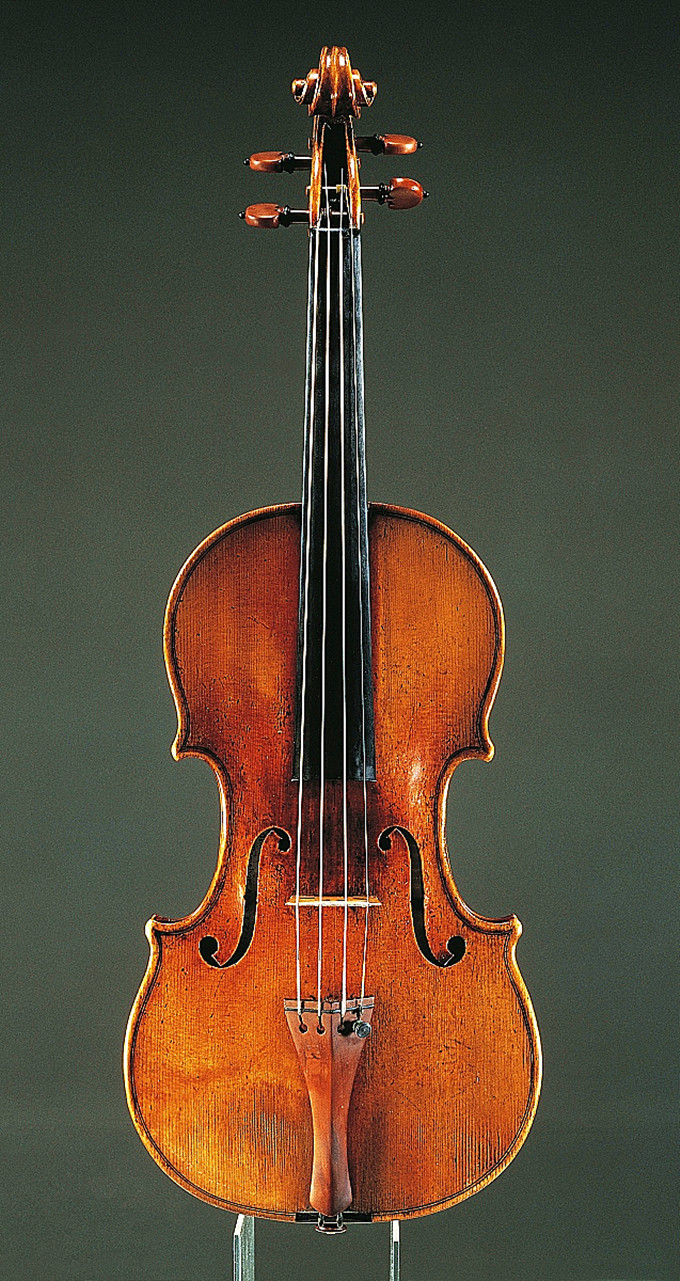 |
|
|
|
| |
世界上独一无二的斯特拉迪瓦里小提琴,因为它的制作精美和音色的漂亮,以及保存完好,堪称世界之最。 |
|
|
|
| |
Album cover of Balakirev's
piano Concerto |
|
|
|
| |
Uh-oh, it's
amazing that this report was studied by a university.If you're a fan of
strings, you'll know that Italian harpsichons are extremely skilled and
expensive, and that their instruments are beyond the reach of the
average person. But if you love me and my dog, you need to know more!
The design of modern violins has changed little since Andrea Amati began
making his instruments in Cremona, Italy, in the 16th century.Now,
scientists think they may have figured out why his designs last for
nearly 500 years. What's so fascinating?Actually early violin makers
trying to recreate the voice of the people is well-founded, baroque
violinist Francesco, • jamie nyongani (Francesco Geminiani) (born in
Italy in 1687) in his works wrote in the art of playing the violin,
playing the violin is the secret of a "instruments can be comparable to
those of the perfect human voice tone".
Why rival the human voice? Is it a form of narcissism?
Inspired by Francesco Geminiani, students at ** * University decided to
find out the truth by exploring the resonance of hundreds of violins,
including two of the world's oldest: Andrea Amati's violin of 1570 and
Gasparo da Salo's violin of 1560.
They also analyzed the sounds of six Stradivarius violins and seven
Italian violins from the same period;The violin sounds were compared
with the English vowel sounds of eight female singers and eight male
singers.In particular, they looked at formant - the same characteristics
that humans have when they make vowel sounds.The team found that the
Resonance of the Amati instrument was very close to the male voice,
while the Stradivari instrument was closer to the tenor and Altos.
"Early violins were not solo instruments, but accompaniments to songs
and dances."
"It's conceivable that Andrea Amati might want to create a stringed
instrument that mimics the human voice to fit into the world of music."
It's a pretty amazing move...Ha ha
When people from all over the world flocked to Italy to learn
violin-making, it was not without reason.And Antonio is the master of
the string instrument!As long as it's a string, you know, it's more
elaborate, it's more masterly, and people use the Strad as the code name
for their instrument.It is estimated that he made 1,116 stringed
instruments in his life, of which 960 were violins. Some 650 survived,
including 450 to 512 violins.
He also made Lute, Mandolin, etc., is a string instrument maker master,
the world's most expensive violin is his work.Now you can see his name
in many places, even in the anime Detective Conan his violin appearance,
if you haven't seen it, it's time to make up for it |
|
|
|
| |
 |
|
| |
安东尼奥·斯特拉迪瓦里(Antonio Stradivari)正在测试自己制作的小提琴 |
|
|
|
| |
|
|
|
|
| |
Today in the
history of music
On September 17, 1762, The 74-year-old violinist and composer
Francesco.Francesco Geminiani (1687-1762), in Dublin, was unable to take
advantage of the fact that his maid had stolen his only unpublished
manuscript on violin playing.
Francesco Saverio Geminiani (C.1680 ~ 1762) was born in Lucca in 1679 or
1680.His father, Giuliano Geminiani, was a violinist with the Cappella
Palatina and his first teacher.He went on to study in Milan with Carlo
Ambrogio Lonati, and eventually went to Rome to learn violin playing
from Corelli, whose influence was the strongest of all, and which would
become evident in The later works of Jamiani himself.Geminiani has also
been to Naples, because we know he learned composition from Alessandro
Scarlatti there.
In 1706 Geminiani returned to his native land and began his career as a
violinist, composer and teacher.He took over his father's duties with
the Signoria Theatre or-Chestra and the Court orchestra before being
appointed concertmaster of the Naples Opera Orchestra in 1711.According
to Burney, Geminiani was so free in the band that most violinists found
it difficult to play with him, so he ended up playing the viola.If the
story is true, it is most likely not that Geminiani was unable to
control his speed.The Neapolitan orchestra, by contrast, is familiar
with the older style of the grand concerto and has not yet experienced
the stylistic variations found in the solo concerto, in which the solo
violin is accompanied by a bass, with a degree of freedom that is not
only permitted but even required.In 1714 the disappointed Geminiani went
to England and began his successful career abroad.Although he restricted
his activities to a relatively small circle of celebrities, he soon
became one of the foremost violinists and composers in England.
He gave regular concerts and from 1716 published his works in England,
where they were warmly received by a usually less enthusiastic English
audience.In fact, England became the main place of his life, although he
did go to France for the publication of his work.Geminiani visited
Ireland several times, spent the last three years of his life there and
died there at the age of about 82.
Geminiani was not a precocious genius in composing but rather a late
starter in his work on the subject.His work is highly affected by the
clay column, as clay column, jamie nyongani also concentrate on the
violin music writing, especially concertos and played music, though he
did also wrote some works for other instruments, jamie nyongani not
vivaldi that extremely fast composer, he was not a bit anxious to
increase the number of his works, rather than repeatedly to these works
of polishing processing and strive to write them more perfect.Although
the number of works is not great, the quality and aesthetic taste of
these works are enough to prove that Geminiani was indeed an outstanding
and important composer of the Baruch period.
Another important difference between Geminiani and vivaldi of his
generation is that he did not write solo concertos for the violin. He
wrote large concertos of the kind corelli loved.The genre was becoming
less popular in Italy in Jamiani's day, but in Britain the atmosphere
was much more conservative, and Corelli's tradition of stylistic use
lasted longer than elsewhere, so the big concerto remained
popular.Geminani's grand concerto is usually composed of four movements,
with a speed arrangement similar to Corelli's
"slow-fast-slow-fast".Corelli also created a dramatic effect by
alternating very short passages between soloist and band, a style that
was in fact adopted not only by Corelli but also by Bernardo Pasquini
(1637 ~ 1710) and Georg Muffat (1653 ~ 1704).But unlike the Concertino
in Corelli's grand Concertino, Mr Geminiani added a viola, so that the
main volume was increased by an internal part.
Geminiani's instrumental music is more church than interior, and dance
movements are rarely used in his other works.Geminiani went further than
Corelli in decoration, because he used decoration not only in the slow
movement but also in the fast movement.Given the age at which these
instruments were written, Geminiani's virtuography is highly
demanding;In some passages there is even a requirement for the seventh
position, which, with the addition of some difficult double notes, jumps
of great intervals, complex rhythms, and various complex timbals, made
these pieces of music very challenging, and not every violinist could
play them at that time.Geminiani also left behind a manuscript of
unaccompanied music, which, because there is no tradition of writing
this genre in Italy, should be said to be very rare and rare.Both the
unadorned and the adorned notation of his opus 1 have survived and are
undoubtedly instructive and helpful to modern violinists who want to
understand the later baroque style of playing.
Geminiani's work was more influential than his big concertos and
minstrelsy, or perhaps it was the logical consequence of his career as a
teacher;But this is an exception among the best violinists, composers,
for only a few violinists in the whole course of the history of violin
art have written anything comparable to him in teaching.Perhaps The most
important of Gemenani's many books on Violin Playing, guitar Playing,
aesthetics, harmony, accompaniment, and The like is The 1715 book "The
Art of Playing on The Violin."It is probably the earliest treatises on
the art of the high violin systematically, and although it contains less
detail than a modern violinist might want to know, the significance of
its coming from such an early age can hardly be overestimated.
Violin technique are discussed in this book in many ways, a lot of views
are far away before his time, for example, the chromatic scale fingering
is such, jamie nyongani advocate using change refers to the methods play
a chromatic scale interval, and so he would keep people pointed out the
troubles of chromatic slide refers to and can be played "clean" the
method of chromatic, unfortunately he mentioned this advanced fingering
is not cause enough attention and neglected people,So it wasn't until
the 20th century that the diatonic fingering, played with alternate
fingers, gained widespread use (the 19th century Belgian violinist
Berilio developed the diatonic fingering suggested by Geminiani).Jamie
nyongani should use of expansion and contraction fingering is mentioned,
and he recommended using "as much as possible" knead in the baroque is
also unique, seems to have no other violinist ever left behind any works
prove knead string in addition to, as a kind of outside should also
sometimes used to decorate gimmick of continuous use, so jamie nyongani
described at least prove to knead string or have different attitude, he
must be a very independent-minded violinist and personality, have the
courage to stick to their many years practice cultivated by different
aesthetic taste.
Although the ideas geminiani sets forth in his work are in many ways
ahead of his time and in many ways prophetic.Geminiani's way of holding
the bow seems old-fashioned, because his right hand is still far from
the bow.But in many ways he was far ahead of his contemporaries in
posture;His chin was placed to the left of the string board, so that he
could play the position more easily;He also pointed out that the violin
should not be held flat but lower on the right, which is more natural
for playing the G string;His comments on the role of the elbow and wrist
in the playing of short notes, on the part of the shoulder in the
playing of the full bow, and on the use of the bow as often as possible
were undoubtedly correct and instructive.
Geminiani is not an extremely versatile artist, nor is he one eager to
show his skill to his small audience.But he was an outstanding violinist
and composer who embodied the development of the Italian school of
violins from Corelli to Tardini during the baroque heyday.On the one
hand, he inherited the tradition of Corelli, on the other hand, he made
his own contribution to the glorious tradition with his own works.His
works are richer in acoustics, richer in ideas and contrast, and more
demanding in skills.His ideas, as recorded in Geminiani's writings, are
of particular value to us, because they help us to know what happened
more than two centuries ago, and thus to better understand and master
the musical styles of that period.
Today's video:1、Jiminy:
Concerto in D Major (H.73/Op.3, No.1);2. Sonata for gemenani bass for
cello;Geminiani's most famous works are three sets of major concertos. |
|
|
|
| |
|
|
|
|
| |
|
|
|
|
| |
杰米尼亚尼大提琴通奏低音奏鸣曲 |
|
|
|
| |
Francesco Geminiani Sonates pour Violoncello |
|
|
|
| |
Francesco
Geminiani - Sonates pour violoncelle avec la basse
continue
演奏:Bruno Cocset(个人最爱之一), Les Basses Réunies
Francesco Saverio Geminiani (1687-1762)
巴洛克时期意大利作曲家,小提琴家
|
|
|
|
| |
|
|
|
|
| |
杰米尼亚尼最著名的作品是三套大协奏曲;他的作品2(1732),作品3(1733)和作品7(1746),(总共42首)介绍中提琴作为协奏曲组的成员,马金 |
|
|
|
| |
Geminiani's most well-known compositions are three
sets of concerti grossi; his Opus 2 (1732), Opus 3
(1733) and Opus 7 (1746), (there are 42 concerti in
all) which introduce the viola as a member of the
concertino group of soloists, makin |
|
|
|
| |
|
|
|
|
| |
未得原作者编者授权严禁转载www.mt77.com任何内容 |
|
|
|
|
zh |
|
|
|
|
|
|
|
|
|


